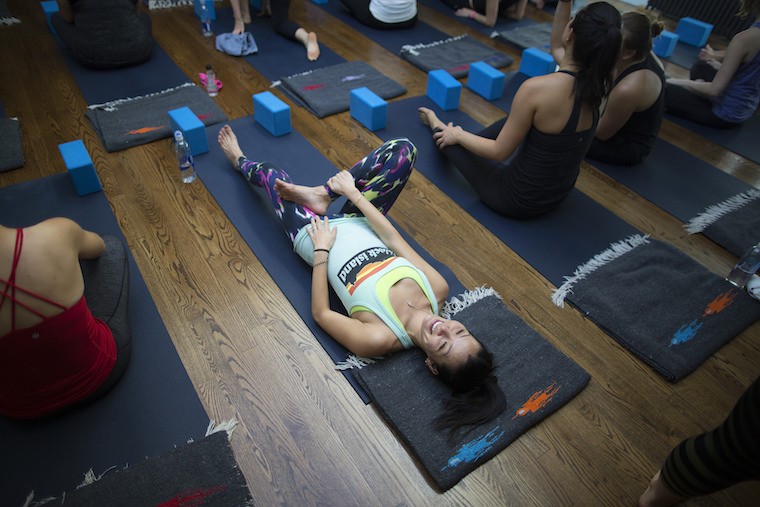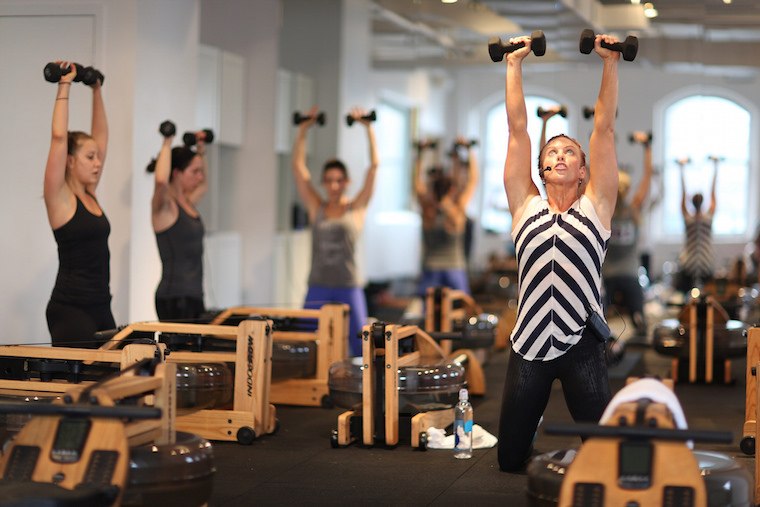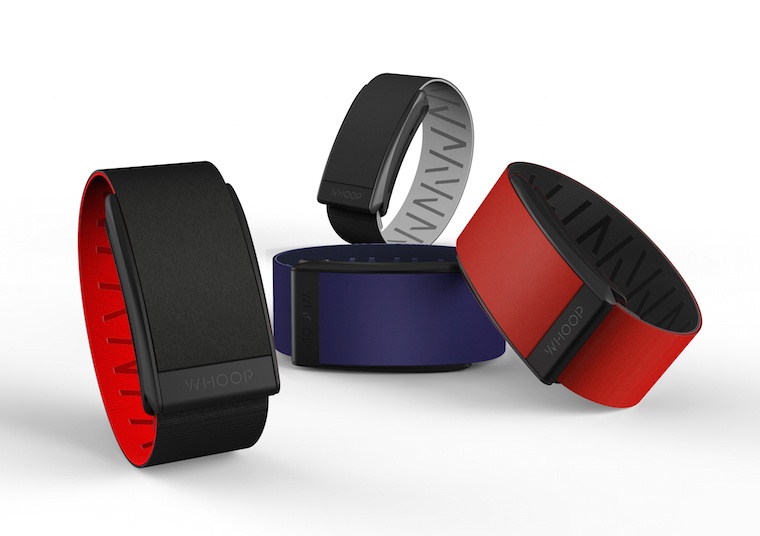5 Surprising Things I Learned About Fitness From the Smartest Wearable Yet
Using a unique set of metrics and truly actionable data, Whoop takes fitness tracking to an entirely new level and has been embraced by professional and college athletes like Olympic swimmer Connor Jaeger, NBA superstar Lebron James, and the Harvard squash team.
Via a metric called heart rate variability (HRV) and advanced sleep tracking, it measures how much "strain" you're subject to each day and how well your body recovers from that strain, emphasizing the fact that the time you spend sweating each day is just one small part of an effective workout routine. "Will [Ahmed], the founder of the company, always says, 'Are you an athlete three hours a day or 24 hours a day?'" explains Jack Seitz, Whoop's vice president of business development. "Every decision you make counts."
For pros, the approach has obvious value, since it can show them when they're overtraining (which can lead to injury) or when they're undertraining and could stand to push harder. In fact, Whoop's research (all conducted by the company itself, so to be taken with a grain of salt) so far has shown higher recovery scores correlated with improved field goal and free throw accuracy. Athletes who wore Whoop for about four months also changed many behaviors—leading to more sleep, decreased rates of injuries and illness, and improved measures of fitness (like lower resting heart rates).
Stats that actually move people to make changes? That's the holy grail of fitness trackers, and now, Whoop is becoming available to the general public for the first time—if you're willing to drop $500 to get one. But will the average person really benefit from this kind of in-depth information?
I wore it for three weeks to find out, and while it's bound to be a tool mainly used by the marathon runners, triathletes, and CrossFit competitors among us, I gained some invaluable insights.
Here's what I learned during my Whoop-ified workouts—and how it affected my fitness habits.

1. I'm not getting nearly as much sleep as I thought I was...
Whoop uses your heart rate, heart rate variability, and motion to track your sleep (and even breaks it down into light, deep, and REM sleep), and the first big surprise for me was how much time I was spending in bed awake. Going to bed at midnight and waking up at 6 a.m. does not mean I'm getting six hours of sleep, for example—it's closer to a shockingly low four and a half.

{{post.sponsorText}}
Once you use it for a bit, the "Sleep Coach" feature recommends when you should be in bed in order to get the sleep you need (based on the day's strain, your past sleep, and when you need to wake up). I found it nearly impossible to follow the advice, since it would often tell me to spend 10 hours in bed to get a solid eight hours, which would mean the end of my workday would need to basically be my bedtime.

2. ...and that's majorly affecting my workouts
On the days when I got very little sleep and had a low recovery score, I'd often feel like I was crushing it during a workout and then see my strain score was not nearly as high as I thought it would be. So, essentially, it felt like I was working hard because I was in a sluggish state. Whoop keeps you honest.

3. Alcohol is messing with my fitness, too
Ditto for days after I drank alcohol before bed. I directly could see how it affected my sleep and recovery score, and then my workout performance generally sucked. Look, I haven't decided to give up cocktails for cardio; just sayin' it's good to know.

4. It's really hard to quantify the effects of strength training
I often find people don't feel like they're working as hard during strength training, which means it can be harder to convince them of the benefits. A spin class leaves you drenched in sweat and panting, for example, in a way deadlifts never will, but the benefits of building muscle are diverse and long-lasting.
This is an issue even for a sophisticated tracker like Whoop, which uses heart rate data to measure strain, meaning I felt like it often underestimated my "strain" when I was doing workouts based on lifting heavy weights as opposed to, say, a run. Seitz says the algorithms will only keep getting smarter, and users just have to know how to interpret the numbers instead of always assuming a higher "strain" is always indicative of a better workout.

5. It is possible to design a wearable well
I'm always baffled by all of the design flaws wearables come with, and Whoop was the first that I've ever worn without any annoyance. It's soft and comfortable and is easy to fit perfectly to your wrist so it never slides around, and you don't even have to take it off to charge it (you just slide a battery pack on top for a bit). It's also totally waterproof.
As a non-athlete, it's unlikely I'd ever pore over my Whoop stats on a long-term basis, but the insights I got from just a short stretch will definitely make me more conscious of how sleep and recovery affects my workouts in the future. And Seitz says they're okay with that. "Even when we talk about the general consumer, this is something that’s geared for somebody who’s an athlete. It’s not the same as a Fitbit or any other wearable or tracker," he says. "We want to make sure the people that are using it really understand what we’re giving them."
Forget movement; these wearables track mindfulness. Or, if you're looking for style, try these designer-approved fitness trackers.
Loading More Posts...